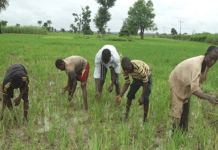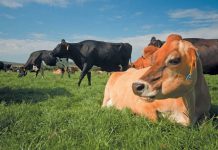Rearing pigs at home can be a rewarding family project but there are crucial factors that come into consideration first. To begin, feeder pigs are purchased as weaned piglet at 68 weeks old. They are raised and reach their market weight at about 6 months of age. They should be healthy and in good condition when purchased. Characteristics to look for include smooth hair coat, pink skin color and alertness. Feeder pigs should weigh about 40 kg at purchase. The main factors are;
Water
A pig can drink about 90 liters of water a day. Clean, fresh water should be available at all times. There are many types of automatic water refill machines available, or you can simply provide a tub of water. Watering systems should be checked and cleaned regularly, especially during warm weather. If a water tub is provided secure,it will prevent them from rooting under it and spill the contents.
Management
Pigs will stay clean if you let them. They will designate an area for eating, sleeping and elimination of waste. If they are housed inside leave a space free of bedding to be used for waste. In an outside pen, they will establish their own preferences. Remove manure from pen daily and keep pen dry to reduce odors. Consider your neighbors when planning the location of your housing and manure storage areas. Keeping the manure storage area dry helps to reduce odors, consider covering manure to keep out rain. Composed pig manure makes an excellent addition to garden soils.
Pig Housing
Housing is the main factor because it covers wide aspect range.Before you bring a pig home you should have a place prepared to house your pig. In warm weather they need a place that is dry and protected from the sun. In cold weather pigs also need a dry place that is protected from the cold and wind. Size the pen to accommodate the pig as it grows. Pigs need enough space to move comfortably. Young ones weighing 50 kilograms need at least 46 square feet per pig. When they have reached market weight, they need 1012 square feet of space each.
Pigs may be kept outside during warm weather.However, fencing for pigs is an important consideration. You may use a permanent wire fence with a board around the bottom to discourage digging, or you may use temporary moveable electric fencing systems if you train the pigs to it. A moveable fencing system allows you to use the pigs to clear and work a piece of land they will get some of their feed from ‘pasture’, it will keep the pig pen from becoming muddy and reduce odors.
If you keep them outside, be sure to provide protection from the sun because pigs have sweat glands on their snouts only hence over heating quickly. Whatever housing and fence system you use, make sure it is pig tight. Pigs are very intelligent animals, if there is a weak point in the pen, they will find it and they will get out.





